Search Thermo Fisher Scientific
FIGURE: 1 / 5
Phalloidin Control (21833) in ICC/IF
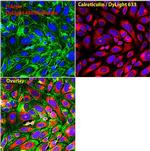
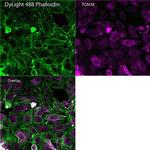
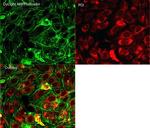
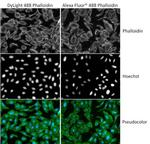
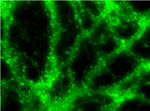
Product Details
21833
Immunohistochemistry (IHC)
Immunocytochemistry (ICC/IF)
Type
Conjugate
Excitation/Emission Max
Form
Concentration
Storage conditions
Shipping conditions
RRID
Product Specific Information
Format: 300 units of lyophilized DyLight 488-Phalloidin (300 units/mL) in methanol. Prepare stock solution by adding 1000 µL of pure methanol to the vial and gently mix.
21833 has been successfully used in immunofluorescence and immunohistochemistry. DyLight 488-Phalloidin has an excitation/emission of 495/521 nm and molecular weight of 1582.65 g/mole.
DyLight 488-Phalloidin Stock Solution is prepared in methanol, and is also soluble in DMF, or DMSO. The unused Stock Solution should be promptly stored at -20°C in a foil pouch with desiccant, and protected from light. The stock solutions are stable for at least one year. Staining cells with some of the DyLight Phalloidin conjugates may require the use of a higher concentration of the phalloidin conjugate; therefore to minimize the amount of methanol added to the cells, the vial contents could be dissolved in 0.5 mL methanol to yield a final concentration of 600units/mL.
Working solution of 1unit/mL (per 96-well plate) can be prepared by diluting 20 µL of the Stock Solution in 5.98 mL of PBS and mixing well. Typical staining procedure adds 50 µL of Working Solution (i.e. 1 to 5 unit/mL) to a each well. Incubate cells in the dark for 30 minutes at room temperature (optimal staining times varies from 10 minutes to 3 hours depending on cell type). Aspirate and wash cells three times in PBS after incubation. If desired, probe with specific primary antibodies followed by secondary antibodies conjugated to any compatible fluorophores before using DyLight 488-Phalloidin conjugate.
Target Information
Phalloidin is a bicyclic peptide that belongs to a family of toxins isolated from the deadly Amanita phalloides “death cap” mushroom and is commonly used as a counterstain (similar to DAPI or Hoechst) in cell biology and histology imaging applications to selectively label F-actin in fixed cells, permeabilized cells, and cell-free experiments. Labeled phalloidin conjugates have similar affinity for both large and small filaments and bind in a stoichiometric ratio of about one phallotoxin per actin subunit in both muscle and non-muscle cells. Phalloidins reportedly do not bind to monomeric G-actin, unlike some antibodies against actin. The dynamics of the actin polymerization in cells are important for a variety of cellular processes from cell motility to cell shape, from muscular contraction to cytokinesis, and more.
For Research Use Only. Not for use in diagnostic procedures. Not for resale without express authorization.

Performance Guarantee
If an Invitrogen™ antibody doesn't perform as described on our website or datasheet,we'll replace the product at no cost to you, or provide you with a credit for a future purchase.*
Learn more
We're here to help
Get expert recommendations for common problems or connect directly with an on staff expert for technical assistance related to applications, equipment and general product use.
Contact tech support

